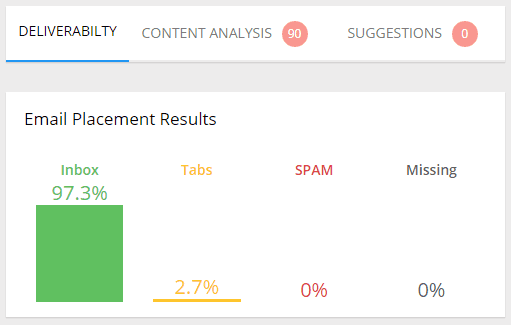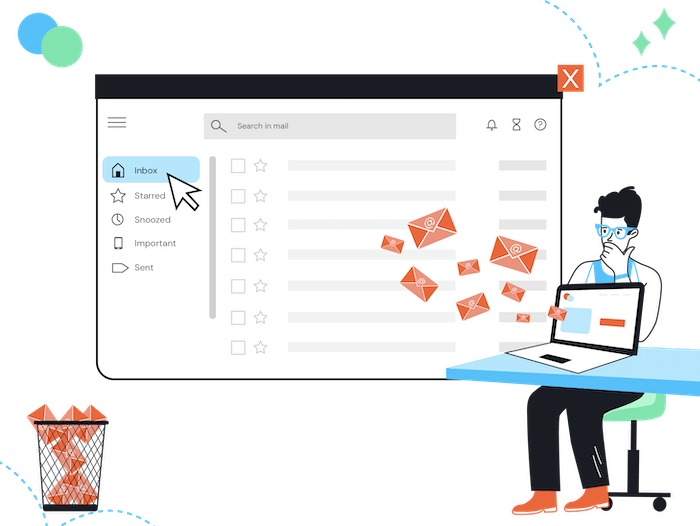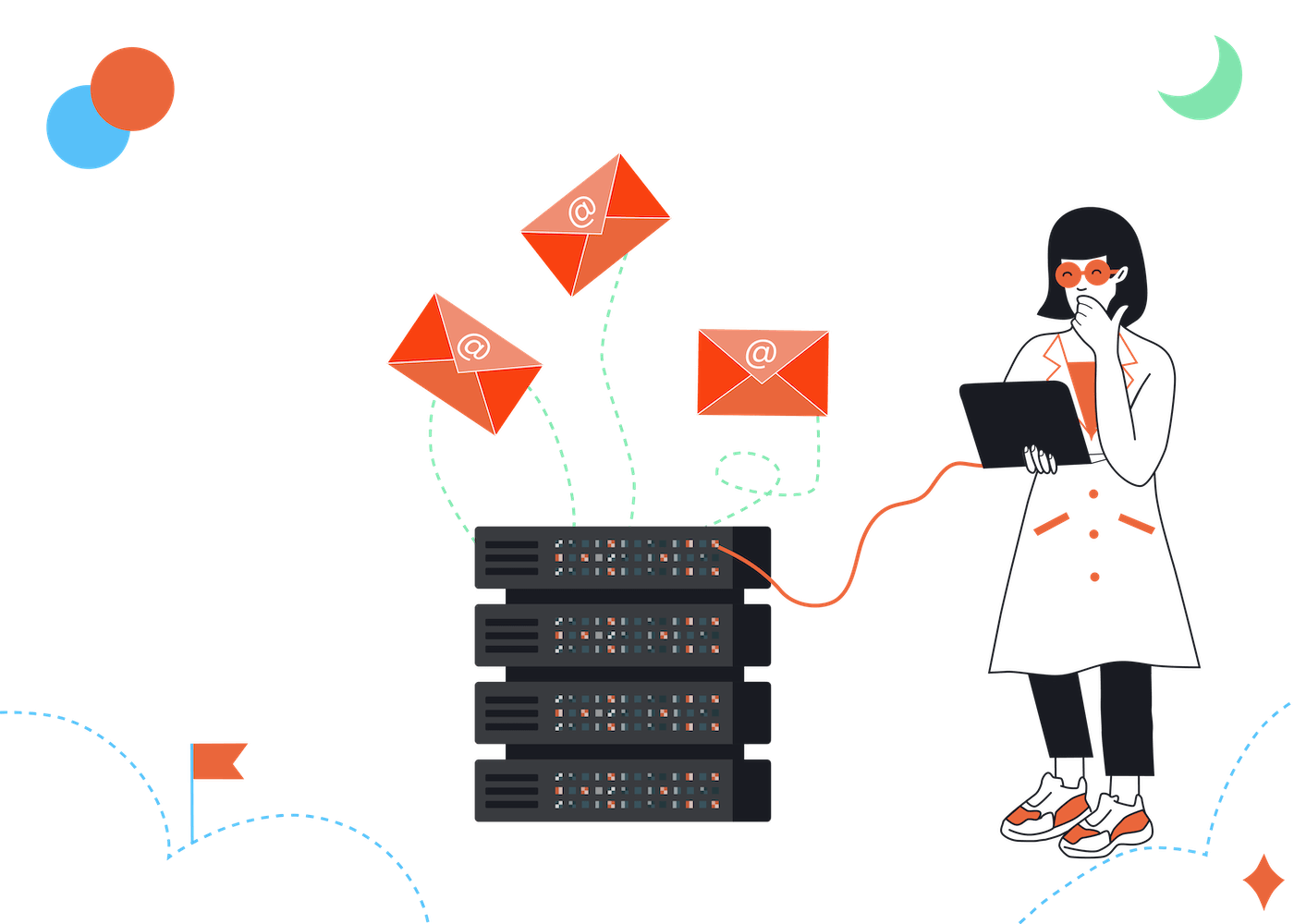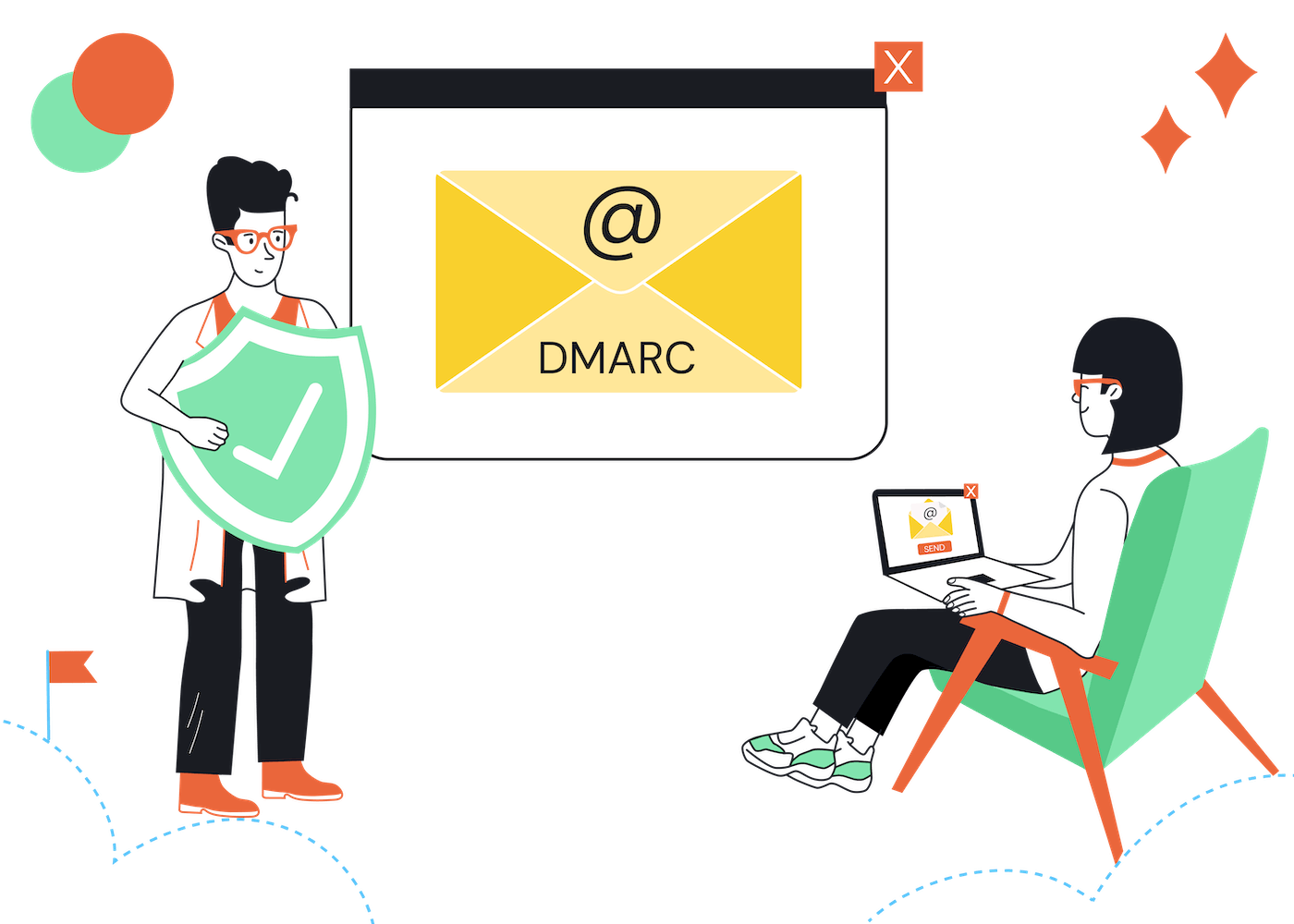We've recently adapted our testing methodology so that we now focus on evaluating email marketing platforms based on the deliverability features that they offer, such as authentication support, complaint handling, and access to deliverability experts.
We believe this new approach provides a more practical and accurate reflection of how well each provider can help you to maintain steady deliverability rates. Learn more about our new email deliverability testing approach here.
Hooray! It’s time to present the results of our 12th round of email deliverability tests! Over the past six years, we've been evaluating the deliverability rates of top email marketing platforms.
The world of email marketing is currently gearing up for the upcoming Gmail and Yahoo Mail changes. Authentication practices that used to be a recommendation will now be required for senders who email more than 5,000 recipients in a single day. These new requirements include DMARC authentication, a header-unsubscribe link as well as a spam complaint rate below 0.3%.
So, with these changes on the horizon, it's now more important than ever to get your email authentication sorted if a permanent residency in the junk mail folder doesn’t sound too attractive to you (or your boss).
To comply with these changes, this time around, we have also implemented full DMARC compliance for all the providers we could (in the rounds before, we only authenticated for SPF and DKIM).
Unfortunately, that meant we had to exclude Kit from this test as they wouldn’t allow us to set up DMARC for the subdomain that we use for our testing. We did try to have it set up, but unfortunately, this is not something Kit currently supports.
But authentication is only one piece of the puzzle – picking a good email marketing service (ESP) is just as important. Again and again, we see huge differences between email marketing platforms. And that’s why you should pay attention to our test results.
Email Deliverability Test Methodology
For these deliverability tests, we use the email deliverability testing tool, Glockapps. Within this platform, we perform a comprehensive deliverability assessment through five separate tests spanning over five weeks.
Glockapps supplies us with a seedlist (contact list) for each test, which includes a variety of diverse popular internet service providers (ISPs).
After each test, the tool provides us with deliverability reports for each email service provider, determining the percentage of emails directed to:
- Main inbox
- Promotions folder
- Spam
- or if the emails went missing
During our tests, we ensure the authentication of all sender subdomains using SPF (sender policy framework), DKIM, and now also, DMARC authentication.
To gain a more detailed insight into our deliverability test methodology, be sure to check our email deliverability test page where you can see how popular email providers have performed over the past five years.
It's important to note that effective email deliverability extends beyond selecting an Email Service Provider (ESP). Although choosing the right ESP is still an important factor, several other elements significantly influence the delivery rate of your emails.
Elements such as maintaining a clean and well-managed email list, building a positive sender reputation, and crafting engaging and relevant email content are equally, if not more, important contributors to deliverability. It's essential to recognize that as the volume of emails sent increases, the impact of the ESP alone diminishes. That's why our reporting is particularly relevant for small to medium senders who use shared IP addresses.
In other words, while a reliable ESP is a key element within deliverability testing, its effectiveness is complemented and sometimes overshadowed by meticulous list management, sender reputation development, and the creation of compelling email content.
What is The Definition of Email Deliverability?
Before delving into the results, let's define the concept of 'email deliverability', and how it differs to 'email delivery'.
Email delivery occurs when an email is successfully transmitted to the receiving server (how to calculate email delivery rate).
Email deliverability is achieved when an email successfully lands in the recipient's inbox.
It's crucial to note that just because an email is delivered, it doesn't guarantee it reaches the intended destination, i.e., the recipient's main inbox. There are a few other places it could land:
- Spam/junk folder
- Promotions tab for Gmail
- Worst-case scenario: go undelivered or missing
The term 'email deliverability' encompasses all these scenarios, forming the basis of our testing. If an email is consigned to the spam/junk folder or goes missing, it falls under the classification of ‘undelivered.'

Note: In our email deliverability tests, the deliverability rate was determined by the proportion of emails that effectively reached recipients' mailboxes, irrespective of whether they were directed to the main inbox or a supplementary tab (e.g., Gmail Promotions). If you want a detailed breakdown between Gmail's main inbox and the Promotions tab, you can find this information in the second table provided below.

What is a good Email Deliverability Rate?
Our tests show that the average deliverability rate of all providers is 83.1% this round.
Anything above a deliverability rate of 89% is considered excellent according to our methodology. Rates from 88 to 83% are considered acceptable. Any rate lower than that is considered poor.
As you can see in this round, it seems that most providers' scores have unfortunately decreased compared to the previous round in June 2023 – despite the fact that we are now DMARC compliant.
So, without further delay, let’s dive into the results of our latest email deliverability test…
Email Deliverability Rates: Takeaways
ActiveCampaign takes the lead this round with an average deliverability rate of 94.2%. This is an improvement from last round, which sees them move up 3 places and claim the number 1 spot – great work ActiveCampaign team!
Constant Contact follows closely behind with 91.7%, they also managed to move up 3 places from last time.
Brevo also saw a nice improvement, securing 8th place with a deliverability rate of 88.3%, moving up 6 places since last time.
HubSpot faces challenges in deliverability, once again achieving a rate of a measly 77.7%, placing it at 12th out of 15.
Benchmark returned to the 40’s, with an average of 47.1% and a decrease since our last round. This brings them to the last place.
SendPulse is the newcomer in our email deliverability tests and while we can’t provide data for their average of the last 3 rounds, they came second to last with 62.8%. We’re eager to see if they perform better in our future tests!
Where did the emails end up?
| Email Marketing Tool | Main Inbox % | Tabs % | Spam % | Missing % |
|---|---|---|---|---|
| ActiveCampaign | 84.4 | 9.9 | 4.1 | 1.7 |
| Aweber | 74.8 | 8.2 | 6.6 | 10.4 |
| Benchmark | 40.9 | 6.2 | 35.7 | 17.3 |
| Brevo | 78.1 | 10.2 | 7.1 | 4.5 |
| CleverReach | 83.8 | 6.2 | 7.2 | 2.9 |
| Constant Contact | 84.2 | 7.5 | 2.5 | 5.8 |
| Drip | 79.6 | 8.6 | 6.6 | 5.1 |
| GetResponse | 83.1 | 7.8 | 1.2 | 7.8 |
| HubSpot | 73.2 | 4.5 | 16.1 | 5.8 |
| Mailchimp | 79.0 | 10.6 | 6.7 | 3.7 |
| MailerLite | 80.5 | 9.3 | 2.1 | 8.2 |
| Mailjet | 75.4 | 12.7 | 4.9 | 7.0 |
| Moosend | 86.1 | 4.1 | 2.0 | 7.8 |
| Omnisend | 64.1 | 11 | 21.4 | 3.5 |
| Sendpulse | 56.2 | 13.4 | 33.0 | 4.2 |
- ActiveCampaign and CleverReach were least likely to have any emails go missing with only 1.7% and 2.9% getting lost on their way to the inbox.
- Benchmark, Sendpulse, and Omnisend saw the highest percentage of emails landing in spam folders (between 21-35%)
- Benchmark, Aweber, and MailerLite experienced the highest number of missing emails
Deliverability to Most Popular Internet Service Providers (ISPs)
There are a huge amount of mailbox providers out there, which is why our tests were sent to over 30 different of the most popular ISPs internationally, weighted according to importance. The following table summarizes the average deliverability rates to Gmail, Yahoo, Hotmail, Outlook, and AOL. For Gmail, we’ve differentiated between the emails delivered to the main inbox and the Promotions tab.
| Tool | Gmail Inbox % | Gmail Promo % | Yahoo % | Outlook % | Hotmail % | AOL % |
|---|---|---|---|---|---|---|
| ActiveCampaign | 100% | 0.0% | 100% | 100.00% | 90% | 100% |
| Aweber | 81% | 0.0% | 100% | 93.85% | 90% | 100% |
| Benchmark | 86.4% | 0.0% | 0% | 9.23% | 10% | 0% |
| Brevo | 100% | 0.0% | 60% | 100.00% | 100% | 50% |
| CleverReach | 86.2% | 0.0% | 93% | 100.00% | 100% | 90% |
| Constant Contact | 100% | 0.0% | 100% | 100.00% | 100% | 100% |
| Drip | 96.9% | 0.0% | 60% | 84.62% | 90% | 80% |
| GetResponse | 97.8% | 2.2% | 100% | 100.00% | 100% | 100% |
| HubSpot | 98.5% | 0.0% | 93% | 55.39% | 50% | 100% |
| Mailchimp | 100% | 0.0% | 100% | 93.85% | 100% | 100% |
| MailerLite | 96.9% | 0.0% | 80% | 93.85% | 100% | 80% |
| Mailjet | 80% | 0.0% | 93% | 98.46% | 90% | 100% |
| Moosend | 100% | 0.0% | 100% | 100.00% | 100% | 100% |
| Omnisend | 93.8% | 0.0% | 100% | 38.46% | 40% | 100% |
| Sendpulse | 100% | 0.0% | 13% | 63.08% | 60% | 40% |
Compared to previous rounds, a much lower proportion of emails ended up in Gmail's Promotions folder. Instead, they were more likely to end up in the Primary inbox. This could suggest potential changes on Gmail's end around how they determine promotional vs primary content – or, could even be the result of us setting up DMARC authentication this round
- ActiveCampaign, Brevo, Mailchimp, Constant Contact, Moosend and Sendpuls had the highest percentage of email delivery rates to Gmail's main inbox, all achieving 100%.
- GetResponse, Constant Contact, and Moosend achieved a 100% delivery rate to Yahoo, Outlook, Hotmail, and AOL inboxes.
- 100% of Benchmark emails were blocked by AOL and Yahoo.
The Best Email Deliverability Over Time
We’ve seen that deliverability rates tend to fluctuate over time. Just because a tool hasn’t performed quite so well this round, doesn’t mean it doesn't have a good deliverability track record. We’ve assigned a star rating to each provider based on its overall performance over the last 3 rounds of testing. You can also see whether it performed better or worse than the last round.
| TOOL | STAR RATING | CHANGE SINCE LAST ROUND |
|---|---|---|
| ActiveCampaign | ↑ | |
| MailerLite | ↓ | |
| Mailchimp | ↓ | |
| Constant Contact | ↓ | |
| GetResponse | ↓ | |
| AWeber | ↓ | |
| Moosend | ↑ | |
| CleverReach | ↑ | |
| MailJet | ↑ | |
| Hubspot | ↓ | |
| Drip | ↑ | |
| Omnisend | ↓ | |
| Brevo | ↑ | |
| Sendpulse | – | |
| Benchmark | ↓ |
With an average deliverability rate of 94.2%, ActiveCampaign takes the number one spot and our ‘Best email deliverability’ award.
Although they didn’t perform as well this round, MailerLite won our ‘Best of 5’ award once again, with an average deliverability rate of 94.41% from the last five rounds of testing.
Email Deliverability Test: Conclusion
Like every round, the results of our email deliverability test highlight the importance of evaluating the email deliverability rates of email service providers. The drop in results this time around is disappointing, especially considering that we were presented with such high results in our last round in June 2023. However, we will continue to keep testing and carefully monitoring the rates of these providers.
Among the 15 email service providers tested under identical conditions, some have demonstrated better capabilities in bypassing spam filters than others. However, it is safe to say that ActiveCampaign that stands out this time around, proudly reclaiming their number-one spot. With an average deliverability rate of 93.44% over the last three rounds, they claim the highest deliverability rate in this round, earning the prestigious title of ‘Best email deliverability.'
Although MailerLite didn’t keep their number 1 spot, they still holds the ‘Best of 5′ title. Which makes it the sixth round that they have won this award. Congratulations!
Stay tuned for the results of our next round of testing, which will be available to you six months from now. And don't forget to sign up below to stay informed about the ever-evolving landscape of email deliverability and to be one of the first to receive our results in your inbox.
Please note: We readjusted the calculations due to a testing error, resulting in higher deliverability rates across the board (although the highest-ranking tools remained consistent)
We keep our content up to date
21 May 2025 - Added disclaimer message about new testing methodology
28 Feb 2024 - Updated methodology section
19 Feb 2024 - Readjusted calculations due to a testing error, resulting in higher deliverability rates across the board (although highest-ranking tools remained consistent)
31st Jan 2024 - Overall average updated
Our Methodology
This article has been written and researched following our EmailTooltester methodology.
Our Methodology






